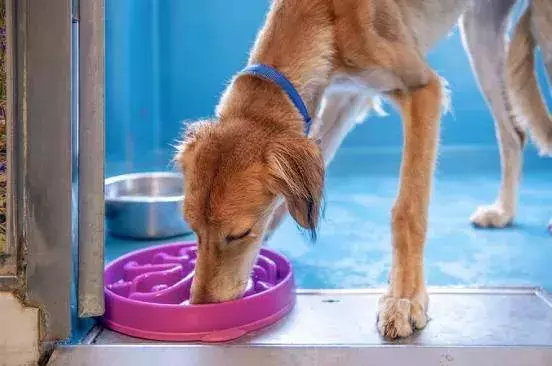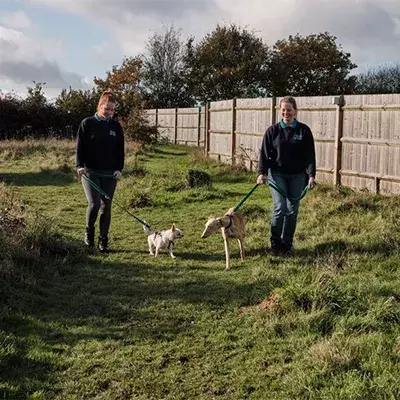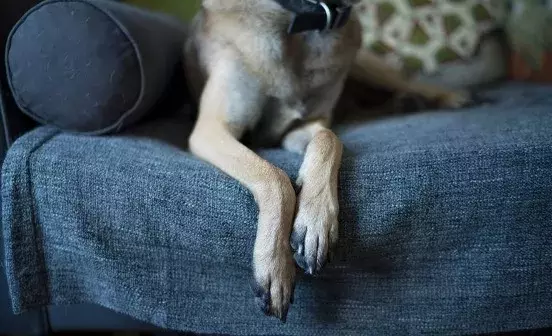Keeping your child safe is paramount to parents. Children and dogs can form a wonderful bond, which makes them excellent companions for each other. While they can develop a joyful friendship, it’s important to keep in mind some proactive steps to ensure each interaction remains positive and safe. We’ve put together some helpful tips for parents and carers to help keep both your children and your dog safe.
ALLOW DOGS TO HAVE THEIR QUIET TIME
Children should always leave dogs alone when they are asleep, as waking them suddenly mid-snooze risks startling them. When scared, uncomfortable or overwhelmed, a dog’s instinct is to move away from whatever is causing them stress. When this happens, encourage your child to leave your dog alone and allow them time to rest and destress. Consider installing a baby gate or setting up an indoor kennel or crate to create a physical time out zone for your dog and ask your child to leave them alone when they are in this area.
PRACTICE BEING CALM AND GENTLE
Children can be unpredictable, so it’s really important to watch your dog’s body language to make sure that they feel comfortable. Shouting and rough play can cause dogs to worry and become stressed, so it’s always a good idea to encourage your child to be as calm and gentle as possible when around them. Discourage your child from touching your dog when they don’t want to be touched, climbing on them, pulling their ears or tail, or teasing them with treats. Ask your child to stop at the first sign of your dog looking uncomfortable and suggest they switch their attention to another activity instead.
ENCOURAGE THEM TO TEACH TRICKS
Promote constructive play by suggesting your child and dog learn fun skills together. If you have older children, encouraging them to teach your dog some basic commands – like a ‘sit’ or ‘lie down’ – can be a healthy way of building a bond between the pair and strengthening mental stimulation.
BE CONSIDERATE WHEN DISPLAYING AFFECTION
Sometimes expressions of affection can be difficult for dogs to cope with – especially if they feel their personal space is being invaded. If your dog wants affection, ask your child to express it in a slightly different way to how they would for humans. This can be something as simple as a chin scratch – without going over their head where they can’t see your hand – where your dog can move away from the situation if they feel uncomfortable.
KEEP FEEDING TIME SEPERATE
Dogs can occasionally become protective over high-value items, such as a bowl of food. When feeding your dog food or treats, practice doing this in a different room to where your young children are sitting or playing so that they can enjoy their meal undisturbed. The same should apply when they’re playing with their toys. If your dog does get particularly protective over their high-value items, they may be showing signs of resource guarding. Our resource guarding advice tells you about what you can do to reassure your dogs and let them know they don’t need to become defensive.
BE RESPECTFUL WHEN APPROACHING OTHER DOGS
Every dog is different, and it can be hard to know what their temperament is like just by looking at them. Remember to always ask the owner if it’s ok to approach their dog to determine whether they’re comfortable around children or not. If they say yes, remind your child to always let the dog come to them rather than vice versa. Stay calm as the dog approaches and pause to offer them the chance to indicate whether they want to continue receiving attention. You may want to also check out our advice on approaching dogs.
ALWAYS SUPERVISE CHILDREN AND DOGS
It’s easy for children to forget how to stay calm when they’re around a dog. Excitement and curiosity can take over, and this can create a stressful environment for the dog. Be sure to supervise any interactions between dog and child, and where needed, separate them to give your dog some space. If your dog doesn't meet children very often, they may find excitable or noisy children quite scary or even exciting. If your dog is a bit nervous, you may want to read our advice on teaching your dog how to greet people, including children they may meet, in a calm and friendly way.



